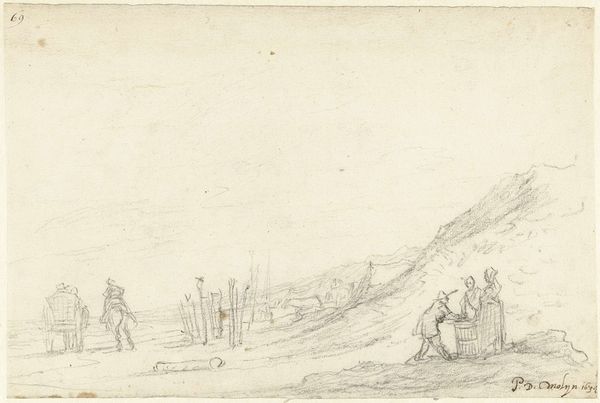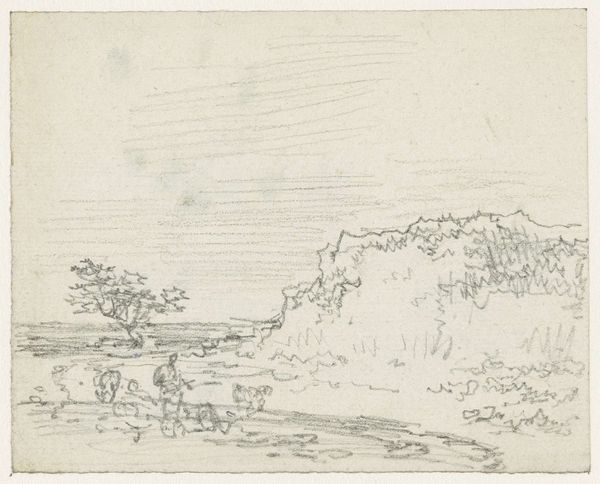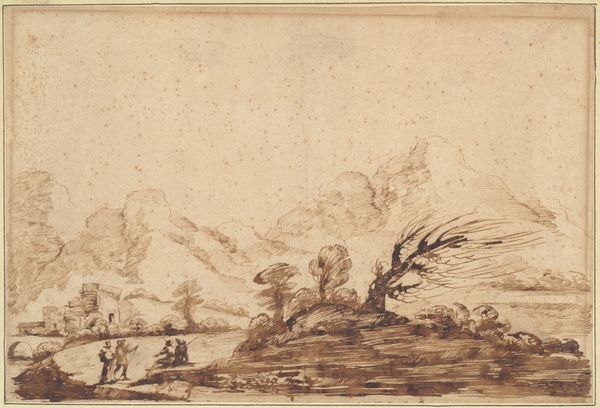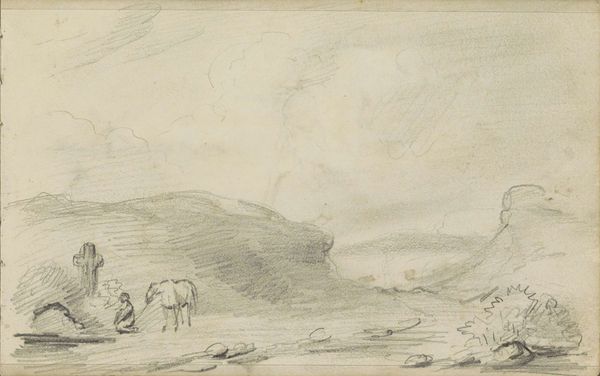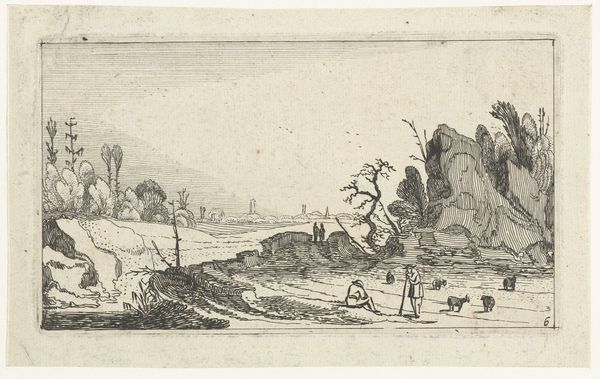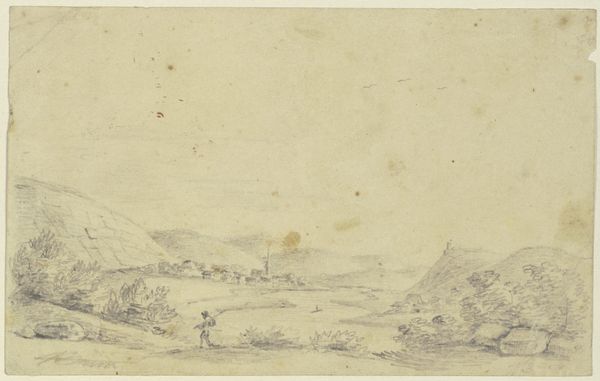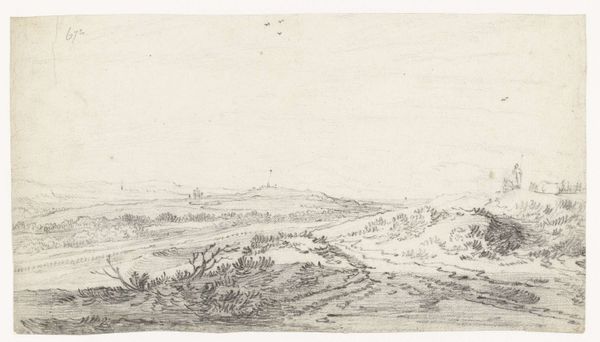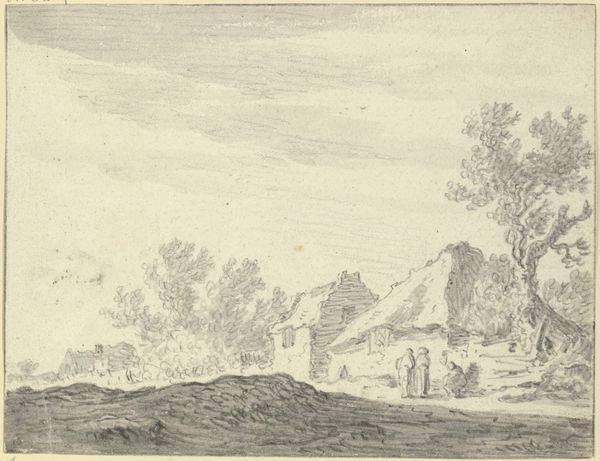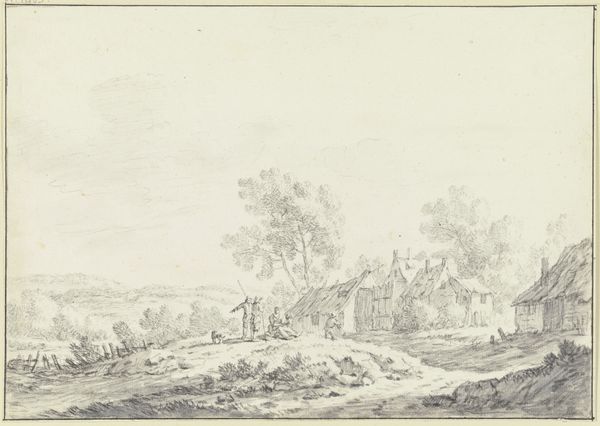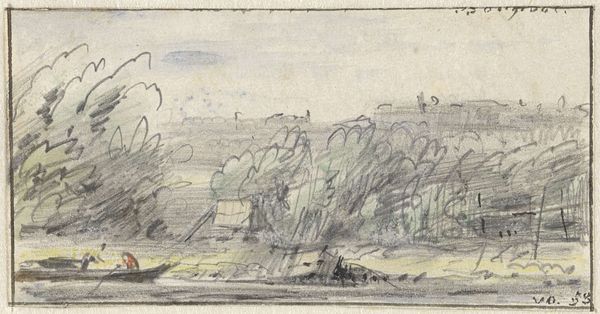
#
quirky sketch
#
mechanical pen drawing
#
pen sketch
#
personal sketchbook
#
sketchwork
#
ink drawing experimentation
#
pen-ink sketch
#
sketchbook drawing
#
storyboard and sketchbook work
#
sketchbook art
Dimensions: height 197 mm, width 312 mm
Copyright: Rijks Museum: Open Domain
Curator: Welcome. Today, we'll examine Gerard ter Borch's "Sketch of the Solfatara near Pozzuoli, outside Naples," dating back to about 1611 and held at the Rijksmuseum. What are your initial observations? Editor: My first impression is stark—an arid, desolate scene. The monochromatic palette accentuates a raw, almost primordial quality. You can almost smell the sulfur. Curator: Precisely. Ter Borch masterfully employs a pen and ink medium, crafting this vista with concise, disciplined strokes. Note how the repetition of lines defines the dramatic terrain, from the rugged mountainsides to the swirling plumes above. Editor: Absolutely. And think about the material implications! Ink, derived from organic matter, traces a volcanic landscape formed by elemental forces. The very act of sketching becomes a geological process of sorts, mimicking the earth's own creative destruction. What kind of labor might the ink production involve back then? Curator: That's an interesting perspective. Ter Borch isn't just depicting the landscape; he is, in a sense, re-presenting its geological activity. Semiotics come into play, consider how the contrasting textures - the jagged mountain edges and swirling smoke – engage in a silent dialogue, indicative of underlying elemental energies. Editor: The presence of figures, small against the overwhelming panorama, underscores a distinct human scale, and likely serves as an indicator of labour connected with sulfur harvesting, an extremely toxic occupation. Curator: Indeed. It suggests the Solfatara’s transformative power on observers. One might perceive nature as an artistic medium. And the execution certainly holds an inherent artistry. Editor: It's fascinating how this sketch allows us to ponder artistic practice but to also ruminate the raw, potentially hazardous realities embedded in natural resource procurement. Curator: Ultimately, Ter Borch presents us with a compelling synthesis. The visual language merges observation and process. Editor: A valuable piece to consider the multifaceted contexts interwoven with both artmaking and earthly transformation.
Comments
No comments
Be the first to comment and join the conversation on the ultimate creative platform.
